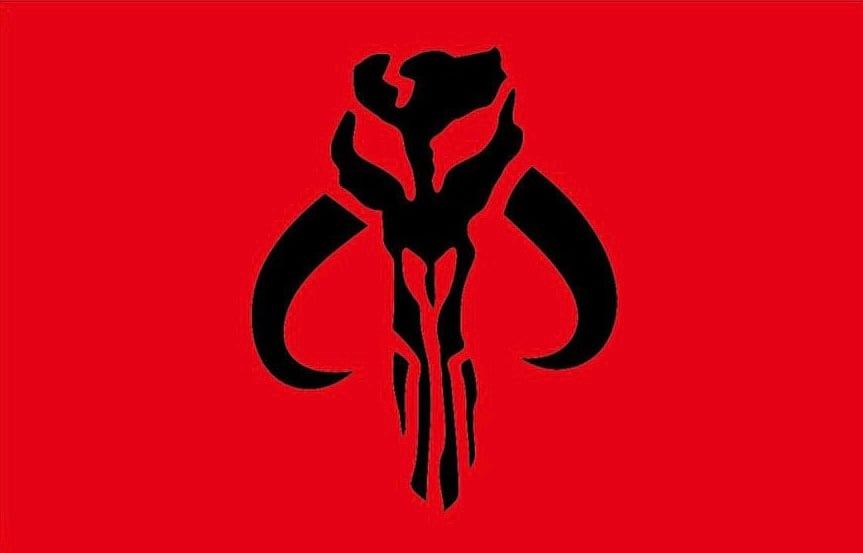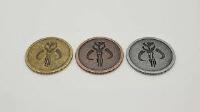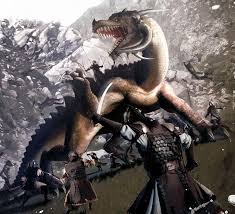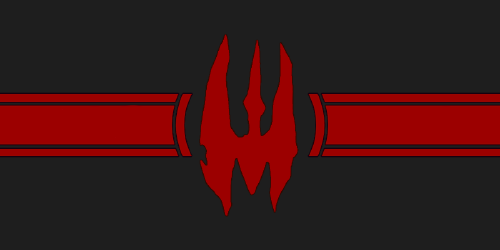| National Factbook |
| Flag: |

|
| Nation Name: |
The Mandalorian Empire |
| Leader Name: |
Cuntryball |
| Currency: |

Mandalorian Credits |
| National Animal: |

Mythosaur |
| History: |
After the Balkan Wars of 1912–13 ended Ottoman rule in the Balkan Peninsula and Austria-Hungary was defeated in World War I, the Paris Peace Conference underwrote a new pattern of state boundaries in the Balkans. The major beneficiary there was a newly created Kingdom of Serbs, Croats, and Slovenes, which comprised the former kingdoms of Serbia and Montenegro (including Serbian-held Macedonia), as well as Croatia, Bosnia and Herzegovina, Austrian territory in Dalmatia and Slovenia, and Hungarian land north of the Danube River. Great difficulty was experienced in crafting this multinational state. Croats favoured a federal structure that would respect the diversity of traditions, while Serbs favoured a unitary state that would unite their scattered population in one country. The unitarist solution prevailed. The 1921 constitution established a highly centralized state, under the Serbian Karadjordjević dynasty, in which legislative power was exercised jointly by the monarchy and the Skupština (assembly). The king appointed a Council of Ministers and retained significant foreign policy prerogatives. The assembly only considered legislation that had already been drafted, and local government acted in effect as the transmission belt for decisions made in Belgrade.
Flag of Yugoslavia (1918–41; 1992–2003) and Serbia and Montenegro (2003–06).
After a decade of acrimonious party struggle, King Alexander I in 1929 prorogued the assembly, declared a royal dictatorship, and changed the name of the state to Yugoslavia. The historical regions were replaced by nine prefectures (banovine), all drafted deliberately to cut across the lines of traditional regions. None of these efforts reconciled conflicting views about the nature of the state, until in 1939 Croat and Serb leaders negotiated the formation of a new prefecture uniting Croat areas under a single authority with a measure of autonomy. Whether this would have laid the basis for a durable settlement is unclear, as the first Yugoslavia was brought to an end by World War II and the Axis Powers’ invasion in April 1941.
The economic problems of the new South Slav state had been to some extent a reflection of its diverse origins. Particularly in the north, communications systems had been built primarily to serve Austria-Hungary, and rail links across the Balkans had been controlled by the European great powers. As a result, local needs had never been met. Under the new monarchy, some industrial development took place, significantly financed by foreign capital. In addition, the centralized government had its own economic influence, as seen in heavy military expenditure, the creation of an inflated civil service, and direct intervention in productive industries and in the marketing of agricultural goods. Modernization of the economy was largely confined to the north, creating deep regional disparities in productivity and standards of living. By the outbreak of war in 1941, Yugoslavia was still a poor and predominantly rural state, with more than three-fourths of economically active people engaged in agriculture. Birth rates were among the highest in Europe, and illiteracy rates exceeded 60 percent in most rural areas. |
| Geography |
| Continent: |
Australia |
| Land Area: |
153,289.64 sq. km |
| Terrain: |
terrain ranges from gently undulating plains in the north to rugged mountain ranges in Kosovo, the federation's southernmost province. |
| Highest Peak: |
Mt. Triglav,
2,864 meters
|
| Lowest Valley: |
,
0 meters
|
| Climate: |
Yugoslavia's climate varies greatly from one part of the country to another, due to the many mountain ranges. The climate of Serbia is on the whole continental, with cold, dry winters and warm, humid summers. The Pannonian Plains have cold winters with hot and dry summers. |
| People & Society |
| Population: |
2,494,905 people |
| Demonym: |
Yugoslav |
| Demonym Plural: |
Yugoslavians |
| Ethnic Groups: |
Serbs - 36.3%
Croats - 19.7%
Other - 44.0% |
| Languages: |
Serbo-Croatian - 56.0%
Slovenian - 4.0%
Other - 40.0% |
| Religions: |
Orthodox Christan - 85.0%
Islamic - 10.0%
Other - 5.0% |
| Health |
| Life Expectancy: |
68 years |
| Obesity: |
35.5% |
| Alcohol Users: |
65% |
| Tobacco Users: |
30% |
| Cannabis Users: |
0% |
| Hard Drug Users: |
0% |
| Economy |
| Description: |
Manufacturing was limited to Belgrade and the other major population centers, and consisted mainly of small, comparatively primitive facilities that produced strictly for the domestic market. The commercial potential of Yugoslavia's Adriatic ports went to waste because the nation lacked the capital or technical knowledge to operate a shipping industry. On the other hand, the mining industry was well developed due to the nation's abundance of mineral resources, but since it was primarily owned and operated by foreigners, most production was exported. Yugoslavia was the third least industrialized nation in Eastern Europe after Bulgaria and Albania. |
| Average Yearly Income: |
$274.23 |
| Gross Domestic Product (GDP): |
$2,487,920,612.00 |
| GDP per Capita: |
$997.20 |
| Gross National Income (GNI): |
$1,147,885,580.00 |
| Industries: |
Main industries include metallurgy, machinery and equipment, petroleum, chemicals, textiles, wood processing, food processing, pulp and paper, motor vehicles, building materials |
| Military |
| History: |
The Royal Yugoslav Army was the armed force of the Kingdom of Serbs, Croats and Slovenes and later the Kingdom of Yugoslavia from the state's formation until the force's surrender to the Axis powers on April 17, 1941. The Royal Yugoslav Army was formally disbanded on 7 March 1945 when the government of King Petar II was abolished.[1]
Shortly before the Axis invasion of Yugoslavia, the army staged a coup against the Serbian Yugoslav monarchy on March 26.
Beyond the problems of inadequate equipment and incomplete mobilization, the Royal Yugoslav Army suffered badly from the Serbo-Croat schism in Yugoslav politics. "Yugoslav" resistance to the invasion collapsed overnight. The main reason was that none of the subordinate national groups; Slovenes, Croats were prepared to fight in defense of a Serbian Yugoslavia. The only effective opposition to the invasion was from wholly Serbian units within the borders of Serbia itself. In its worst expression, Yugoslavia's defenses were badly compromised on April 10, 1941, when some of the units in the Croatian-manned 4th and 7th Armies mutinied, and a newly formed Croatian government hailed the entry of the Germans into Zagreb the same day. The Serbian General Staff were united on the question of Yugoslavia as a "Greater Serbia", ruled, in one way or another, by Serbia. On the eve of the invasion, there were 165 generals on the Yugoslav active list. Of these, all but four were Serbs. |
| Soldiers: |
70,084 |
| Tanks: |
0 |
| Aircraft: |
0 |
| Ships: |
0 |
| Missiles: |
0 |
| Nuclear Weapons: |
1 |
| Last Updated: 03/22/2022 06:48 am |



















